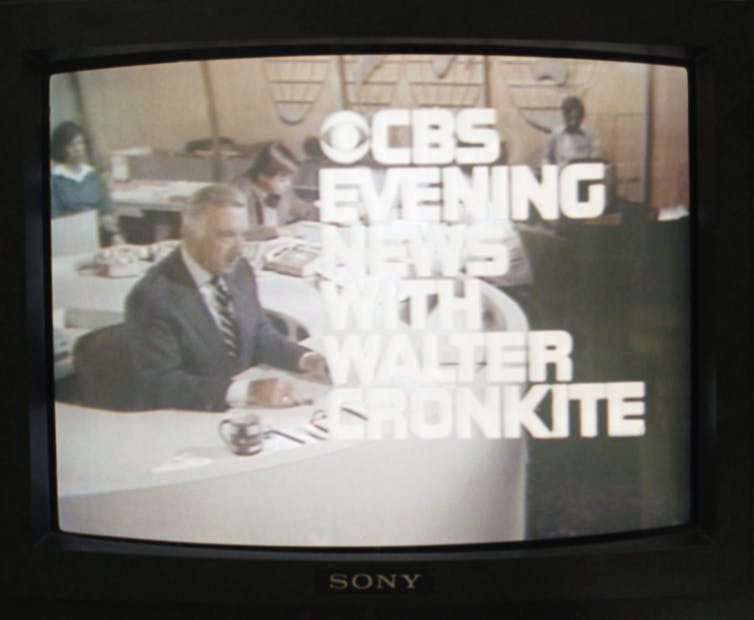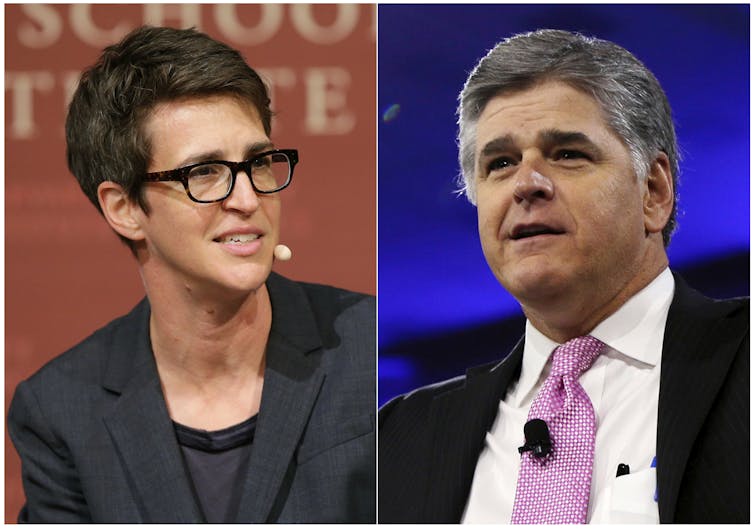Another news outlet has been attacked in the United States. A man rammed his car repeatedly into Fox affiliate KDFW in Dallas, Texas, on Sept. 5. We can now add this to the growing list of recent attacks on — and violent threats to — the media.
A man recently called The Boston Globe and threatened “to shoot you [expletives] in the head … shoot every [expletive] one of you.” Apparently, the Globe’s defence of quality journalism infuriated him.
At CNN, anchors report an uptick in death threats. And, most tragically of all, there was the shooting of five employees in the office of the Capital Gazette in Annapolis, Maryland, on June 28.
Mental illness, isolation, easy access to weaponry, a renewed white supremacy movement and other variables clearly contribute to the increase in both violent rhetoric and actual violence.
But what these occurrences share, and what they’re illustrating, is a profound hatred towards purveyors of journalism.
This isn’t news. Violent acts against the media are as old as our nation. Perhaps Americans are just not accustomed to seeing the violence because most of them grew up in the second half of the 20th century, an era largely devoid of the partisan rancor that was once a hallmark of American journalism – and which seems to have returned.
Ugly history
As media historian John Nerone writes, attacks on the media occur regularly throughout our history.
James Rivington, an 18th-century loyalist printer in New York City, barely escaped being tarred and feathered by the Sons of Liberty, who ransacked his home.

The Junto
In the 19th century, attacks on the press were common. Violence and journalism were intertwined in American culture, largely because of the partisan politics most newspapers propagated.
Abolitionist and newspaper editor Elijah Lovejoy was murdered in Alton, Illinois, in 1837. A pro-slavery mob broke into his jail cell – where he had been placed for his protection – and lynched him. One year earlier, in New York City, The New York Herald’s James Gordon Bennett was savagely beaten by his rival, James Watson Webb. Webb edited New York City’s best-selling newspaper, The Morning Courier and New-York Enquirer, and he’d grown tired of Bennett’s attacks in his popular newspaper column.
When Ida B. Wells-Barnett published anti-lynching reports in Memphis in 1892, a white mob destroyed her press and threatened to kill her.
Lovejoy and Wells-Barnett are remembered because they would later be recognized as civil rights pioneers. But the violent confrontation between two of New York City’s most prominent newspaper editors is less well-known, in part, because it occurred at a time when violence against the press wasn’t uncommon.
In the early days of the Republic, U.S. newspapers were not only observably partisan, they were subsidized by political parties. Because newspapers around the U.S. often represented specific political parties, news reports would be politically framed and competing outlets – often serving the rival political party – would be demeaned.
Countless local editors, like Bennett, were attacked. Some, like Lovejoy, were killed for their work. These attacks on journalists were so common that Mark Twain, who worked as a journalist, lampooned them in his classic short story “Journalism in Tennessee.”
Twain’s satire about press violence tells the story of a young editor reporting to the office of The Morning Glory and Johnson County War-Whoop for his first day of work. When he turns in a brief roundup of local news reported by other outlets, his boss is surprised.
“Thunder and lightning!” he says. “Do you suppose my subscribers are going to stand such gruel as that? Give me the pen!”
The chief editor rewrites the piece, insulting and threatening the editors of the rival newspapers. Calling them scoundrels and liars, he excoriates them for “dissemination of falsehood, calumny, vituperation, and vulgarity.”
“Now that is the way to write,” his boss says upon completion of the piece. “Peppery and to the point. Mush-and-milk journalism gives me the fan-tods.”
The ‘News From Nowhere’
“Mush-and-milk journalism” that outraged Twain’s fictitious newspaper editor is inoffensive, neutral and seemingly objective.
It’s that kind of centrist journalism that developed in the 20th century – what journalist and political scientist Edward Jay Epstein called News From Nowhere — that many of us grew up on.
The evolution of technology, commercial imperatives and new modes of distribution combined to create American journalism’s era of objectivity.
Selling newspapers to millions in mass audiences, and transmitting identical reports to newspapers around the U.S. via the telegraph, both required neutering any clearly biased news reporting.
Regulatory mandates like the public interest standard and the Fairness Doctrine followed the development of radio and television. They further enshrined a “just-the-facts” sensibility in American journalism.
From our vantage point as historians in 2018, we can now see this era of objectivity lasted from about 1930 to 2000, beginning with the introduction of broadcast journalism via radio to the emergence of the multichannel cable television universe and the web’s development.

(AP/Richard Drew
In those decades, journalism became less partisan to be more palatable to mass audiences. Every weeknight, CBS broadcast journalist Walter Cronkite soberly told Americans what they needed to know about the events of the day.
And, in this original network era, opinion was separated from reporting and clearly labeled – whether it was on-air commentaries delivered by Eric Sevareid or on specially designated “editorial” or “opinion” pages in newspapers.
Such segregation of reporting and opinion was not the norm in American journalism history. It was a new idea that quickly gained traction because it proved so commercially advantageous.
Creating audiences in the millions, and then the tens of millions – on television – generated unimagined sums of advertising revenue. Removing opinions from most reporting produced enormous profits for television networks, radio stations and daily newspapers. It became commonplace. Americans grew accustomed to it.
Back to the old ways
It appears the cycle has now turned.
Outlets like Fox News, MSNBC, and even some daily newspapers, are no longer as careful about monitoring the injection of subjectivity into journalism.

AP photo
But they are not entirely to blame. Today’s audiences feel empowered by their autonomy, because they have an enormous number of available and competing media outlets. They can now watch and consume news that best matches their worldview, rather than an homogenised news product designed to be palatable to the masses.
Noting the higher ratings and subscription numbers that accompany this increasing partisanship, news outlets react accordingly. Even more, social media technologies allow audiences to engage with news media like never before, often cultivating a climate of uncivil online discourse. This only intensifies the partisan rancour mirroring 19th-century levels.
Does the end of the depoliticised mass audience era of journalism directly correlate to what seems to be a return of violence against the media?
Until the four journalists were killed in Annapolis early this year (the fifth staffer was not a journalist), only seven had been killed in the last 26 years.
When consumers of MSNBC are baffled by the apparent ignorance of Fox News viewers, and Fox News viewers are sure MSNBC’s fans are dupes, we’ve returned to the world Twain described.
It might be impossible to return to the more civil, professional and respectful era of journalism that many Americans grew up in. But we can, and should, recognise the historic futility of killing the messenger.
Destroying Ida B. Wells-Barnett’s press did nothing to stop the anti-lynching movement, and the murder of Elijah Lovejoy spread the abolitionist message much further than Lovejoy himself ever could.![]()
Jennifer E. Moore, Assistant Professor, Department of Communication, University of Minnesota Duluth and Michael J. Socolow, Associate Professor, Communication and Journalism, University of Maine
This article is republished from The Conversation under a Creative Commons license. Read the original article.














